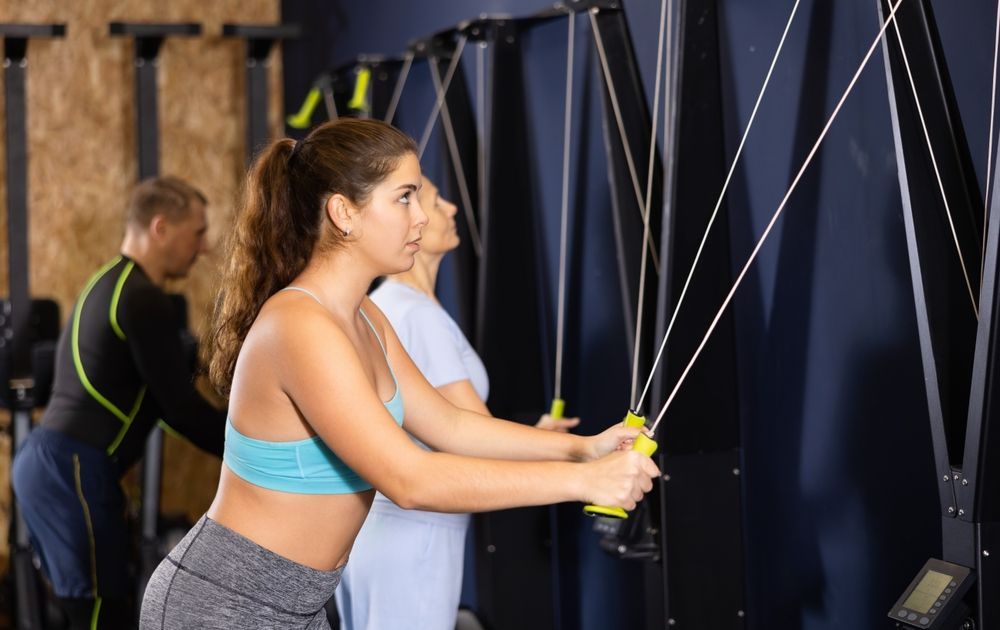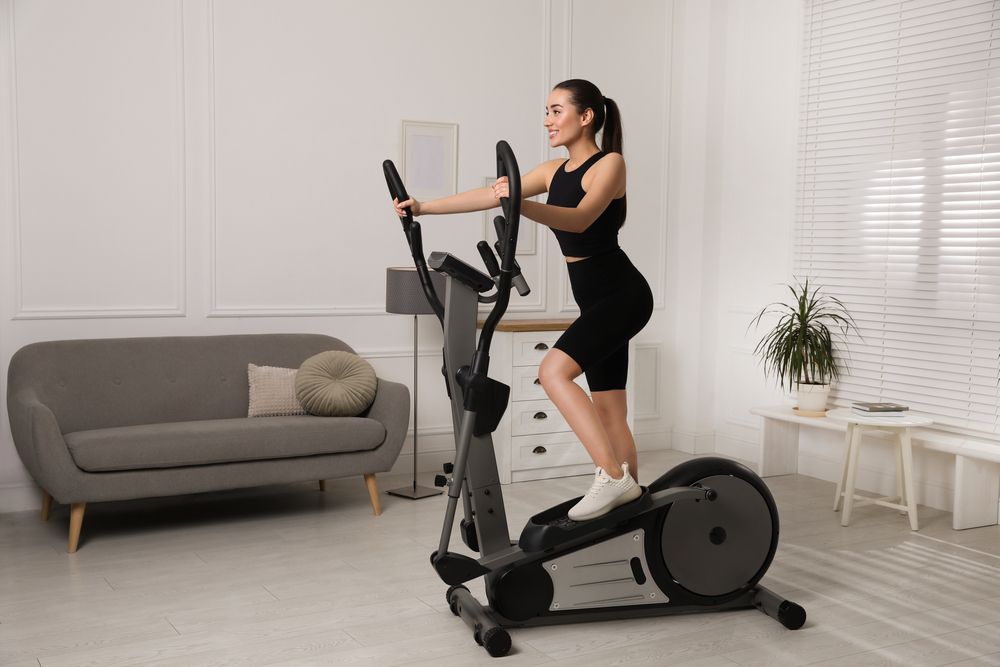If you're aiming to enhance your endurance, incorporating low-impact exercises into your routine is an excellent strategy. These exercises offer both immediate and long-term benefits for your body, placing a premium on joint health. What's more, they can yield results comparable to high-impact alternatives while being gentler on your joints.
Moreover, low-impact training has a unique ability to raise and sustain your heart rate, making it ideal for developing muscular endurance. That's why I'm here to present ten of my top-recommended low-impact exercises for building endurance.
Whether you're just embarking on your fitness journey or are a seasoned gym enthusiast, integrating low-impact training into your regimen is a prudent choice. Let me walk you through some of my favorite low-impact exercises, suitable for weekly workouts, cardio finishes post-strength training, or as enjoyable and effective as active recovery sessions.
Keep reading to discover the top 10 low-impact exercises that will help you build endurance.
1) Walking

Walking stands out as an excellent choice for a low-impact exercise that effectively enhances endurance. It's accessible to individuals of all fitness levels and seamlessly integrates into your daily routine.
By maintaining a brisk pace during your walk, you can elevate your heart rate and sustain it over an extended period, thereby improving both cardiovascular health and muscular endurance. Furthermore, walking engages multiple muscle groups, including the legs, core, and arms, which contribute to overall strength and stamina.
Whether you opt for a 30 to 60-minute steady-state walk or prefer to intensify your workout with 10 to 20 rounds of brisk walking intervals—30 seconds on, 30 seconds off—walking offers versatility and effectiveness in building endurance.
2) Cycling

Cycling emerges as an outstanding choice for a low-impact exercise that significantly boosts lower-body endurance while being gentle on the joints. Whether you prefer outdoor cycling adventures or the controlled environment of a stationary bike indoors, the benefits remain consistent.
Pedaling activates key muscle groups in the legs, including the quads, hamstrings, and calves, fostering strength and endurance development over time. The versatility of biking allows individuals to tailor their workouts to their specific needs, catering to various fitness levels and preferences.
Embark on a bike ride for a steady-state workout lasting 30 to 60 minutes to establish your endurance base. When you're ready to challenge yourself further, switch things up with 15 to 20 intervals comprising 40 seconds of high-intensity effort followed by 20 seconds of an easy pace.
3) Swimming

Swimming presents a plethora of advantages for full-body muscular endurance, mobility, and joint health. The water's resistance offers a challenging yet gentle workout for muscles across the body, including the arms, legs, core, and back.
Furthermore, water buoyancy alleviates strain on joints, making swimming an attractive option for individuals with joint concerns or those seeking a rehabilitation-friendly workout. Additionally, the wide range of motion required for swimming strokes enhances flexibility and mobility, promoting overall physical well-being.
For a continuous swim, aim for 20 to 30 minutes at a moderate pace, focusing on maintaining steady breathing and rhythm. Vary your strokes (freestyle, breaststroke, backstroke) to engage different muscle groups. Alternatively, for an interval workout, consider 10 to 12 rounds of 50-meter sprints with 20-30 seconds of rest between each sprint. During the sprints, strive to maintain a high intensity, using your preferred stroke or switching between strokes for variety.
4) Rower

A rowing machine is a powerhouse for enhancing full-body endurance while providing the advantages of low-impact exercise for cardio routines. This versatile equipment engages multiple muscle groups simultaneously, including the legs, core, back, and arms, delivering a holistic workout that enhances both strength and stamina.
Rowing is gentle on the joints, making it an ideal choice for individuals with joint concerns or those seeking a low-impact alternative to high-intensity cardio exercises. The fluid, rhythmic motion of rowing fosters cardiovascular health and endurance while reducing the risk of injury, enabling individuals to push their boundaries without excessive strain.
For an endurance-focused session, row continuously for 20 to 30 minutes at a moderate intensity, aiming for a consistent stroke rate and rhythm throughout. Looking for a dynamic interval workout? Alternate between 1 minute of rowing at a high intensity (aiming for a stroke rate of 26 to 30 strokes per minute) and 1 minute of rowing at a recovery pace (lower stroke rate, relaxed effort) for a total of 10 to 15 rounds.
5) SkiErg

The SkiErg offers unique workout opportunities. This machine replicates the double-pole motion of cross-country skiing, engaging upper-body muscles in a coordinated and dynamic manner. By integrating arms, shoulders, and core in the pulling motion, the SkiErg provides a holistic workout that enhances strength, stability, and endurance in these muscle groups.
Its smooth and controlled movement reduces joint stress, making it an excellent choice for individuals seeking a low-impact alternative to traditional cardio exercises.
To develop a robust upper-body endurance foundation, ski continuously for 20 to 30 minutes at a moderate intensity. Maintain a steady rhythm, focusing on engaging arms, shoulders, and core throughout each stroke. Interval training adds a lively twist to cardio sessions. Alternate between 30 seconds of high-intensity skiing (strive for a swift pace and strong arm engagement) and 30 seconds of rest or easy skiing for 10 to 15 rounds.
6) Elliptical

Elliptical machines are remarkably accessible and versatile for low-impact workouts, making them perfect for developing muscular endurance and offering alternatives to high-impact cardio activities.
These machines feature a smooth, gliding motion that replicates the natural movement of walking, jogging, or running, minus the joint impact associated with activities like pavement running or jumping. This quality renders ellipticals suitable for individuals of all fitness levels, including those with joint issues or injuries.
Moreover, ellipticals typically boast adjustable resistance levels and incline settings, empowering users to customize their workouts according to their fitness objectives and preferences.
For a steady endurance-building session, maintain a consistent pace for 30 to 45 minutes at a moderate intensity. Focus on elevating your heart rate while actively engaging your legs, arms, and core muscles throughout the workout. Incorporating high-intensity intervals and recovery periods adds variety and intensity. For instance, sprint at maximum effort for one minute, then ease into a two-minute recovery period at a gentler pace. Repeat this sequence for a total of 20 to 30 minutes.
7) Yoga

Yoga offers a distinctive approach to building endurance when compared to traditional cardio exercises. It provides unique benefits by enhancing mobility while simultaneously improving isometric strength and muscle conditioning.
As you transition through various poses, you'll experience a blend of mobility and flexibility challenges. Holding static positions requires significant isometric strength and endurance, which contributes to building overall stamina. For those familiar with yoga, the difficulty of sustaining these poses is well-known.
In addition to enhancing endurance, I encourage clients and athletes to embrace yoga as an effective form of active recovery to kickstart their day.
Engage in a sequence of your preferred yoga poses, focusing on each position for several deep inhale and exhale breath cycles. Aim to sustain continuous, active movement for 10 to 30 minutes to reap the benefits.
8) Alternating Lunges

Alternating lunges stand out as a premier low-impact exercise renowned for their ability to enhance strength and endurance in the lower body. By engaging muscles across the legs, hips, and glutes, lunges offer a robust workout option without imposing excessive stress on the joints.
What sets alternating lunges apart is their unilateral nature, which uniquely challenges stability and enhances balance. As each leg independently supports the body's weight, it strengthens muscles while refining proprioception and coordination—essential components of overall fitness.
To maximize the benefits, aim for three to four sets of 15 to 20 reps per side using solely your body weight. For added variety and intensity, integrate circuit intervals of alternating reverse lunges, alternating between 30 seconds of work and 30 seconds of rest.
9) Bodyweight Squats

Bodyweight squats effectively engage the quads, hamstrings, and glutes, offering a robust workout sans equipment or undue pressure on joints. Through incorporating higher repetitions or interval training, bodyweight squats emerge as a potent means to enhance muscular endurance across these key muscle groups.
By integrating variations such as pauses and tempo reps, the benefits of muscular endurance are further intensified. These techniques compel muscles to exert greater effort over extended periods, fostering resilience and stamina. Additionally, they foster improved mobility by encouraging proper squat technique and depth, thereby bolstering overall flexibility and range of motion.
For a comprehensive routine, aim for three to four sets of 15 to 20 repetitions using solely your body weight. For added diversity, consider integrating circuit intervals to keep the workout engaging and dynamic.
10) Pushups

Pushups stand as a cornerstone upper-body compound exercise celebrated for their efficacy in cultivating muscular endurance, notably targeting the triceps, shoulders, chest, and core. Their true versatility lies in their ability to adapt to diverse fitness levels, catering to novices and seasoned athletes alike.
By integrating variations like tempos and pauses, the endurance challenge escalates, compelling muscles to sustain heightened effort over extended periods. To augment endurance, prioritize higher repetition sets or integrate pushups into circuit intervals, facilitating brief interludes of rest between sets to optimize performance.
Execute three to four sets of 15 to 20 repetitions utilizing solely your body weight. For added diversity, infuse circuit intervals into your routine.

